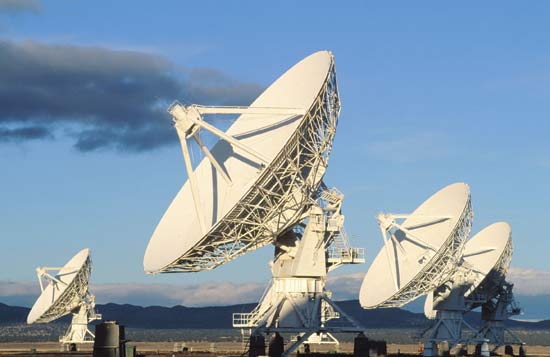 Υπάρχει άραγε περίπτωση τα ισχυρά ραδιοσήματα που μόλις έπιασε το πρόγραμμα Breakthrough Listen, να μην έχουν φυσική προέλευση; Αυτό – θα ήθελαν να- πιστεύουν μερικοί επίμονοι «κυνηγοί» εξωγήινων πολιτισμών.
Υπάρχει άραγε περίπτωση τα ισχυρά ραδιοσήματα που μόλις έπιασε το πρόγραμμα Breakthrough Listen, να μην έχουν φυσική προέλευση; Αυτό – θα ήθελαν να- πιστεύουν μερικοί επίμονοι «κυνηγοί» εξωγήινων πολιτισμών.
Αν και η πιθανότερη εξήγηση είναι ότι τα παράξενα ραδιοσήματα που «άκουσε» το ραδιοτηλεσκόπιο, προέρχονται από κάποιο κοσμικό φαινόμενο (μια μεγάλη μαύρη τρύπα, κάποιο περιστρεφόμενο άστρο νετρονίων ή κάτι άλλο με ισχυρό μαγνητικό πεδίο), η ελπίδα για την ανακάλυψη εξωγήινης νοημοσύνης πεθαίνει τελευταία.
Το πρόγραμμα Breakthrough είναι μια πρωτοβουλία, από το 2015, του ρώσου δισεκατομμυριούχου Γιούρι Μίλνερ, την οποία χρηματοδοτεί με 100 εκατ. δολάρια, με την υποστήριξη διασημοτήτων όπως ο βρετανός κοσμολόγος Στέφεν Χόκινγκ.
Τα 15 νέα ραδιοσήματα ανήκουν στην κατηγορία των «γρήγορων ραδιο-εκρήξεων» (Fast Radio Bursts-FRBs) και προέρχονται από μια άγνωστη πηγή σε ένα νάνο γαλαξία, σε απόσταση περίπου τριών δισεκατομμυρίων ετών από τη Γη.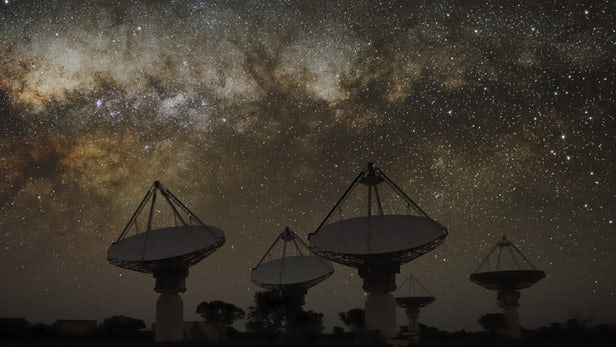
Μέχρι σήμερα έχουν ανιχνευθεί από διάφορα ραδιοτηλεσκόπια περίπου 30 FRBs, που διαρκούν λίγα χιλιοστά του δευτερολέπτου. Είναι η πρώτη φορά, όμως, που η ίδια πηγή εμφανίζεται να στέλνει επαναλαμβανόμενα τέτοια σήματα στο διάστημα, πράγμα που έχει δημιουργήσει ένα ξεχωριστό ενδιαφέρον στους αστρονόμους.
Η εν λόγω πηγή FRB 121102 είχε ανακαλυφθεί το 2012 και αυτή τη φορά έστειλε ισχυρά ραδιοσήματα, σε υψηλότερη συχνότητα από ό,τι στο παρελθόν (περίπου στα 7 GHz).
Η ανακάλυψη έγινε με το αμερικανικό τηλεσκόπιο Green Bank στη Δυτική Βιρτζίνια και η σχετική ανακοίνωση δημοσιεύθηκε από τους επιστήμονες στην ιστοσελίδα Astronomer’s Telegram, σύμφωνα με τις βρετανικές «Γκάρντιαν» και «Ιντιπέντεντ» και το «New Scientist».
Το πρόγραμμα Breakthrough θα διαρκέσει δέκα χρόνια σε πρώτη φάση και θα «ακούσει» ένα εκατομμύριο κοντινά στη Γη άστρα, καθώς και 100 κοντινούς γαλαξίες, σε πολλές διαφορετικές συχνότητες, σε μια προσπάθεια να πιάσει κάποιο εξωγήινο μήνυμα.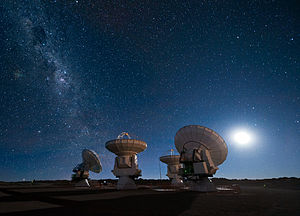
Περίπου εννέα εκατομμύρια εθελοντές από όλο τον κόσμο συμβάλλουν στην αναζήτηση, παραχωρώντας χώρο από τον προσωπικό υπολογιστή τους, για να γίνεται η επεξεργασία των δεδομένων των ραδιοτηλεσκοπίων.
national geographic
Storm of Strange Radio Bursts Emerges From Deep Space
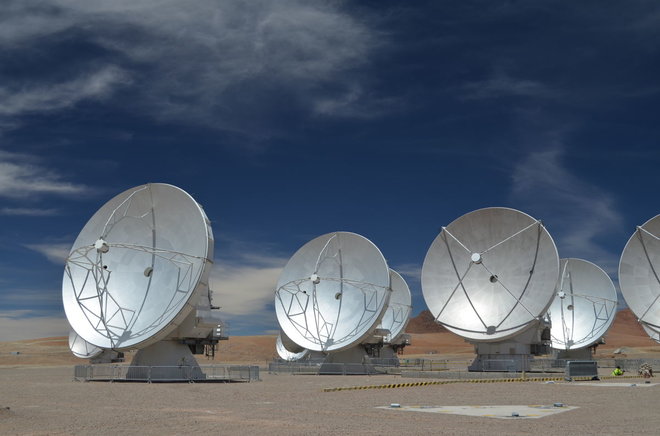
Something has breathed new life into a faraway cosmic mystery machine and caused it to repeatedly hurl tremendous amounts of energy into the void.
It’s not clear exactly what that object is, but scientists refer to the observable phenomenon as a fast radio burst: a fleeting but extremely powerful blast of radio waves. In this case, astronomers caught a rapid stream of radio bursts coming from a galaxy about three billion light-years away.
Scientists with the Breakthrough Listen project made the discovery because, fortunately, they had a pretty good idea where to look. The team had tuned the giant Green Bank Telescope in West Virginia to a spot on the sky where a fast radio burst known as FRB 121102 had previously been singing to the stars.
CBC news
Astronomers detect 15 signals from mysterious object in distant galaxy
 While looking for signs of intelligent life in the universe, astronomers have detected 15 fast radio bursts from a distant galaxy.
While looking for signs of intelligent life in the universe, astronomers have detected 15 fast radio bursts from a distant galaxy.
These poorly understood phenomena are short pulses of radio emission, just milliseconds long, believed to be coming from rapidly spinning neutron stars or black holes in distant galaxies. A less popular theory is that they’re signs of extremely powerful spacecraft from alien civilizations.
This particular fast radio burst (FRB), called FRB 121102, is of particular interest as it is the only known one to be repeating, something that astronomers can’t yet explain.
- Astronomers pinpoint location of fast radio burst from faint galaxy
- Repeating mysterious radio bursts from deep space surprise scientists
Earlier this month, astronomers using the Green Bank Telescope in West Virginia (a collection of radio telescopes) not only found 15 more bursts, but found them at a higher radio frequency than was ever observed before, the astronomers said in their findings published in The Astronomer’s Telegram.
“It’s not surprising that we’ve found 15 more from this source; we’ve been detecting many of them over the past few years,” Paul Scholz, an astronomer who studies FRBs with the Dominion Radio Astrophysical Observatory in Penticton, B.C., told CBC News. “The one thing that’s unique about these [new ones] is that they are at a higher frequency than we’ve ever seen before.”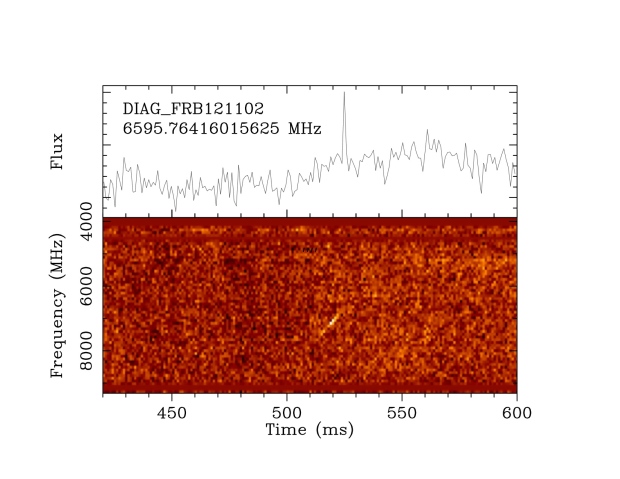
Scholz, who was not involved with the new discovery, was with McGill University when he and a team of astronomers discovered FRB 121102 to be a repeater. In 2016, a McGill team was able to locate the source of the strange FRB.
At the time the signals left its host galaxy, Earth would have been two billion years old, less than half its current age. The only living things on the planet would have been single-celled organisms.
Solving the mystery
As though the object wasn’t strange enough, it also behaves like no other FRB. Typically, objects that emit similar signals, such as pulsars, do so in a smooth fashion across many frequencies. But that’s not the case with FRB 121102.
“So it’s kind of perplexing,” Scholz said.
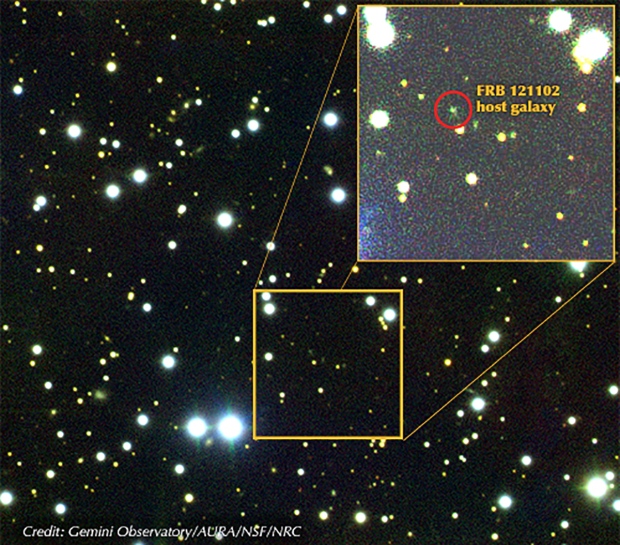
Scholz said that there could be reasons such as the signal being distorted between its source galaxy and Earth.
In the coming months, a new telescope in B.C. called the Canadian Hydrogen Intensity Mapping Experiment (CHIME) is expected to begin its research into FRBs, with the possibility of discovering several a day, something that Scholz is looking forward to seeing.
Searching the deep space: The Robert C Byrd Green Bank telescope at the National Radio Astronomy Observatory, part of the Listening Project, in Green Bank, West Virginia, US”It’s a mystery that needs to be solved,” Scholz said.
 Alien search detects radio signals from dwarf galaxy 3bn light years from Earth
Alien search detects radio signals from dwarf galaxy 3bn light years from Earth
Stephen Hawking’s Breakthrough Listen project picks up radio pulses that could be from black holes, neutron stars or, some speculate – UFO beacons
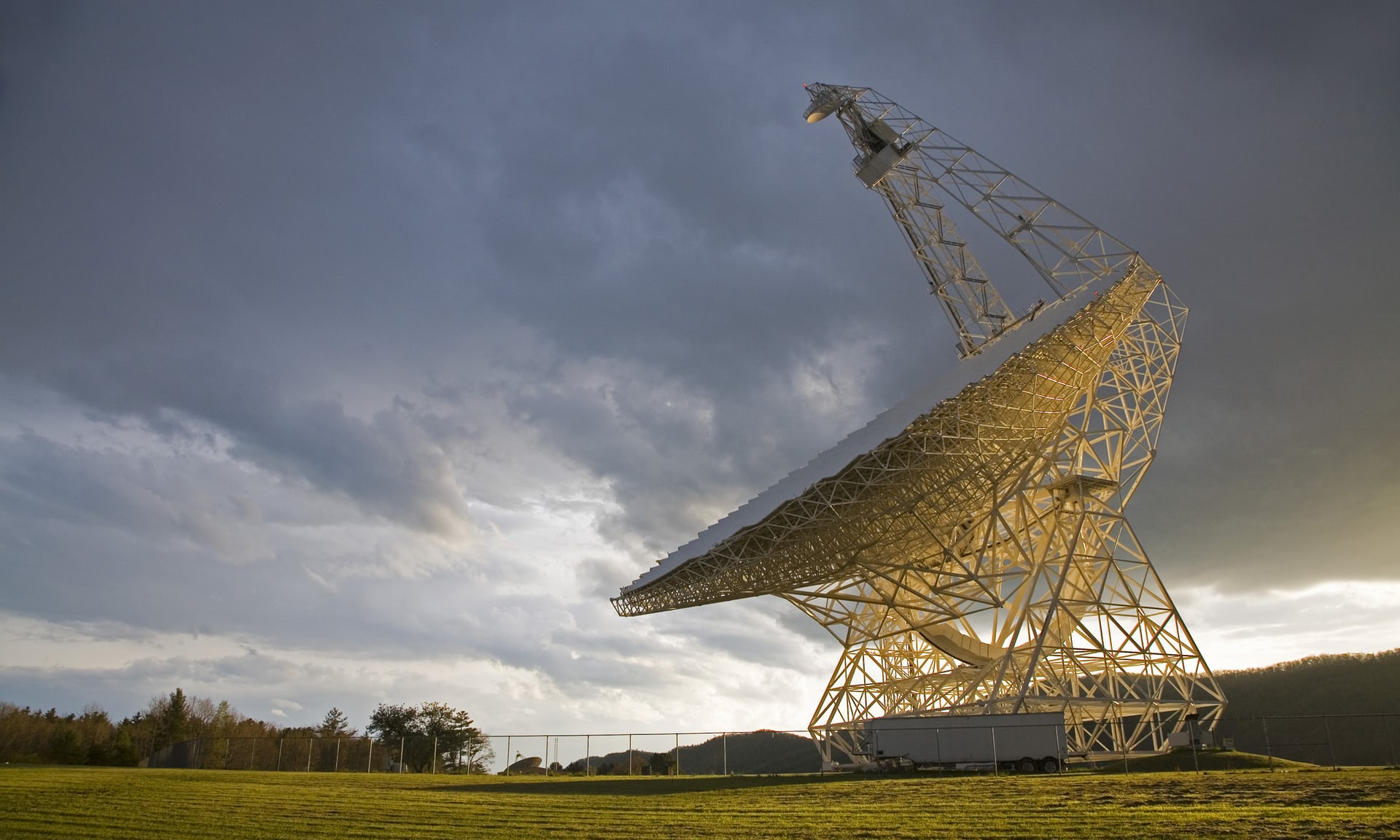
Astronomers searching for signals from alien civilisations have detected 15 powerful, repeated radio pulses coming from a dwarf galaxy 3 billion light years away from Earth.
The source of the mysterious signals, known as fast radio bursts, is unknown. Some have proposed they could be emanating from black holes or rotating neutron stars with extremely strong magnetic fields. A more speculative possibility is that they are beacons from extraterrestrial spacecraft.
The signals were picked up by the Breakthrough Listen project, a $100m (£77m) initiative to find signs of intelligent life in the universe set up by Professor Stephen Hawking and Russian internet billionaire Yuri Milner.
About two dozen fast radio bursts have been detected previously. Because they last only a few milliseconds and radio telescopes can only monitor a small area of the sky at any given time, only one of these sources has been observed to repeat.
The source, known as FRB 121102, was discovered in 2012 and resides in a dwarf galaxy about 3bn light years from Earth.
Now 15 more signals have been observed from the same source and at a higher frequency than the previous signals – although what this signifies about the source of these mysterious events is not yet clear.
“As well as confirming that the source is in a newly active state, the high resolution of the data obtained by the Listen instrument will allow measurement of the properties of these mysterious bursts at a higher precision than ever possible before,” said Breakthrough Listen postdoctoral researcher Vishal Gajjar, who discovered the increased activity.
Andrew Siemion, director of the Berkeley SETI Research Center and of the Breakthrough Listen programme, said: “Whether or not fast radio bursts turn out to be signatures of extraterrestrial technology, Breakthrough Listen is helping to push the frontiers of a new and rapidly growing area of our understanding of the universe around us.”
The findings were reported on the Astronomer’s Telegram website.


